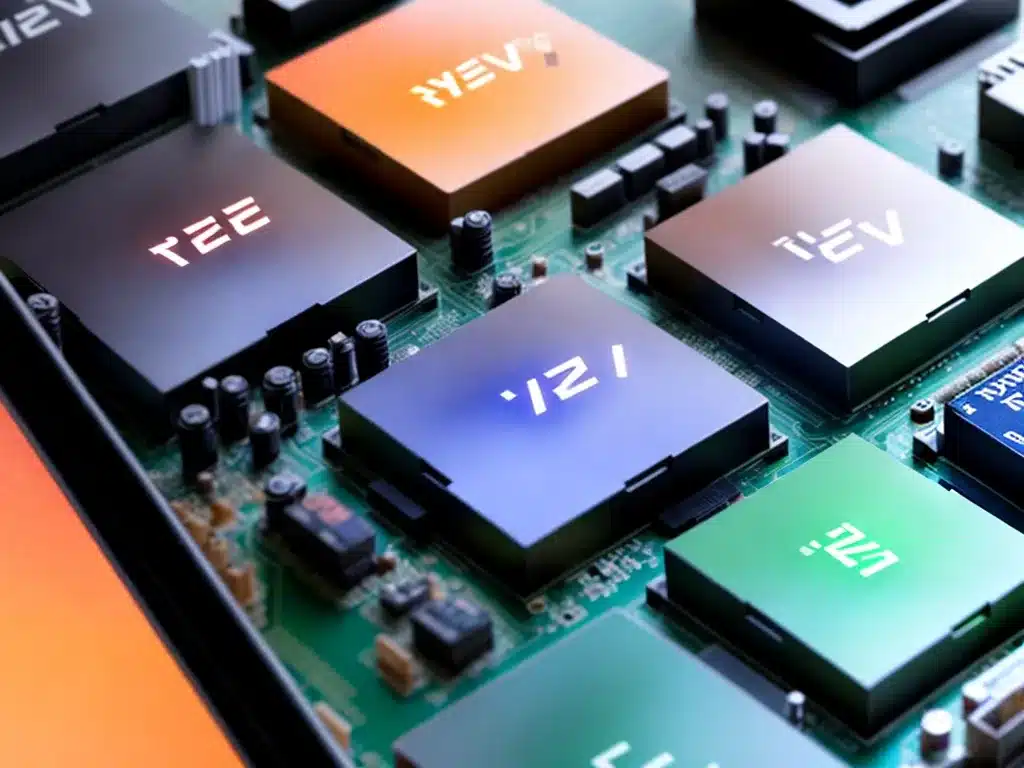AMD Ryzen 7000 vs Intel Alder Lake – Which CPU Platform Is Best For You?
For many PC builders and upgraders, choosing between AMD’s Ryzen 7000 and Intel’s Alder Lake CPU platforms can be a tough decision. Both platforms offer excellent performance and feature sets, but have key differences that may make one a better choice depending on your needs. In this in-depth comparison, I’ll break down the strengths and weaknesses of each platform to help you decide which is best for you.
Overview of AMD Ryzen 7000 and Intel Alder Lake
AMD Ryzen 7000 is AMD’s latest generation of desktop processors based on the new Zen 4 architecture. Key features include:
- Built on TSMC’s 5nm manufacturing process for improved power efficiency
- Support for DDR5 memory and PCIe 5.0 for faster performance
- Up to 16 cores and 32 threads on flagship models
- Enhanced single-threaded performance through higher clock speeds
- AM5 socket and chipsets including X670E, X670, and B650
Intel Alder Lake is Intel’s current generation desktop CPU lineup. Key features include:
- Built on Intel 7nm process and uses hybrid architecture with Performance cores (P-cores) and Efficient cores (E-cores)
- Supports DDR5 and DDR4 memory and PCIe 5.0
- Up to 16 cores (8 P-cores + 8 E-cores) and 24 threads on flagship models
- LGA 1700 socket compatible with Z690, B660, and H670 chipsets
- Enhanced multi-threaded performance through more cores
Performance Comparison
When it comes to sheer processing power, both platforms have flagship processors that are well-matched.
-
For single-threaded performance, Intel still has a slight edge with the Core i9-13900K leading AMD’s Ryzen 9 7950X by around 5-10% in most benchmarks. However, AMD has closed the gap significantly compared to prior generations.
-
For multi-threaded workloads, the Core i9-13900K pulls further ahead thanks to its hybrid architecture with 8 high-power P-cores and 8 efficient E-cores. It boasts up to 53% higher multi-core performance in benchmarks compared to the 7950X.
-
The Ryzen 9 7950X does have a leg up when it comes to power efficiency, delivering strong performance at a 105W TDP vs the 13900K’s much higher 253W power consumption.
For most users, both flagship processors pack more than enough performance for gaming, streaming, content creation, and productivity workloads. The Intel Core i9-13900K has the edge for extreme multi-threaded tasks like 3D rendering or video editing, while the Ryzen 9 7950X is no slouch and runs much cooler.
Platform Features
Both platforms support key next-gen features but have some differences:
-
Memory support – Alder Lake works with both DDR5 and DDR4 memory while Ryzen 7000 is DDR5 only. However, AMD has a slight edge here as its processors and chipsets fully utilize the faster DDR5-6000 memory for more bandwidth.
-
Connectivity – Both provide PCIe 5.0 support for super fast SSDs and graphics. But only Alder Lake has integrated Thunderbolt 4 ports on some motherboards.
-
Overclocking – The AM5 platform is generally considered better for overclocking enthusiasts, with its higher 600W power delivery rating compared to LGA 1700’s max 280W rating.
-
Upgradability – AMD is committed to AM5 until at least 2025. Intel changes sockets more frequently, so upgradability on LGA 1700 is more questionable.
For most mainstream users, both platforms will provide plenty of performance, connectivity, and future-proofing. AMD AM5 has a slight advantage on bleeding-edge features while LGA 1700 offers more flexibility for DDR4 memory support.
Motherboard and Cooler Support
Both platforms have a healthy selection of motherboard options:
-
For Alder Lake, Z690, B660, and H670 chipsets exist. Z690 is best for performance enthusiasts. B660 is a good mainstream option while H610 is budget focused.
-
For Ryzen 7000, X670E and X670 motherboards are high-end, with B650 for mainstream users. X670E has the most robust power delivery and cooling support.
Cooler compatibility is also important:
-
The LGA 1700 socket requires a separate mounting bracket to work with many existing coolers. Low-profile coolers may have fitment issues.
-
AM5 has a fresh mounting pattern that necessitates new mounting hardware. Coolers over 155mm may have clearance issues.
While both platforms have some cooler limitations, AM5 offers an easier experience overall since new brackets aren’t needed. Large high-end air or AIO coolers are recommended for these power-hungry chips.
Overall Winner?
So which platform reigns supreme? Unfortunately there is no definitive winner, as choice depends on your budget and usage.
For pure gaming focused builds, Intel Alder Lake and the Core i9-13900K is the way to go. The extra single-threaded grunt and overall multi-core performance provides the edge for driving high FPS. Just be prepared to spend more on cooling and power delivery.
For productivity focused users who do video editing, 3D modelling etc, the Core i9-13900K is also ideal if your workflow leverages all 24 threads heavily.
However, for more general purpose use, mild overclocking, or builds where keeping costs down is important, AMD Ryzen 7000 and the 7950X is highly compelling. Performance is still outstanding in games and apps, runs efficiently, and leaves room in your budget for a premium GPU.
Ultimately, choice comes down to your specific performance needs versus budget. Both Intel Alder Lake and AMD Ryzen 7000 represent the pinnacle of desktop CPU engineering with advantages in their respective areas. I hope this detailed comparison helps provide insight so you can pick the right platform for building your dream PC!













